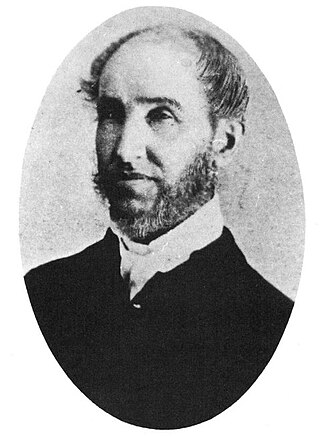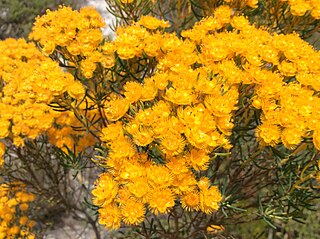Related Research Articles

The Swan River is a major river in the southwest of Western Australia. The river runs through the metropolitan area of Perth, Western Australia's capital and largest city.

George Fletcher Moore was a prominent early settler in colonial Western Australia, and "one [of] the key figures in early Western Australia's ruling elite". He conducted a number of exploring expeditions; was responsible for one of the earliest published records of the language of the Australian Aborigines of the Perth area; and was the author of Diary of Ten Years Eventful Life of an Early Settler in Western Australia.

York is the oldest inland town in Western Australia, situated on the Avon River, 97 kilometres (60 mi) east of Perth in the Wheatbelt, on Ballardong Nyoongar land, and is the seat of the Shire of York.
Thomas Brown was an early settler in colonial Western Australia, and a Member of the Western Australian Legislative Council.
William Burges was an early settler in Western Australia who became a pastoralist and a Member of the Western Australian Legislative Council.

James Drummond was an Australian botanist and naturalist who was an early settler in Western Australia.

William Mitchell was a Church of England priest who was the second ordained person, after Louis Giustiniani, to provide religious services in the Swan Valley area of the Swan River Colony. He worked in the Swan Parish for over 20 years before moving to Perth to take up a position working with convicts and prisoners in the Perth Gaol in Beaufort Street.

The Pinjarra massacre, also known as the Battle of Pinjarra, occurred on 28 October 1834 in Pinjarra, Western Australia when a group of Binjareb Noongar people were attacked by a detachment of 25 soldiers, police, and settlers led by Governor James Stirling. According to Stirling, "about 60 or 70" of the Binjareb people were present at the camp and John Roe, who also participated, estimated about 70–80. This roughly agrees with an estimate of 70 by an unidentified eyewitness. The attack at Pinjarra was in response to sustained aggression by the Binjarebs, including robberies and murder of settlers and members of other Nyungar tribes.

Verticordia nitens, commonly known as Christmas Morrison and other names, is a flowering plant in the myrtle family, Myrtaceae and is endemic to the south-west of Western Australia. The Noongar peoples know the plant as kotyeningara. It is an upright shrub with glistening and perfumed flower heads that appear between October and February. The small compact and erect flowers have been noted for their beauty. Although it occurs in areas near Perth, Morrison featherflower is not classed as rare or endangered because it still occurs in large populations, although its numbers have undoubtedly been reduced as a result of urban development.
William Morrison was a Scottish-born gardener and plant collector employed by Kew between 1824 and 1839.
Rivett Henry Bland was an early settler and a government administrator in colonial Australia.
Samuel Edward Moore was a prominent early settler in colonial Western Australia, a merchant, pastoralist and a politician.
Edward Hugh Barron, was a soldier and pioneer in the Swan River Colony.
John Henry Monger Snr (1802–1867) arrived in Western Australia as an assisted migrant in 1829. After a short period running a mill at what became Lake Monger, he established a hotel and store in York and went on to become one of the richest men in the colony.
Solomon Cook was an American engineer who constructed a substantial mill and one of Western Australia's first steam engines at York.
Walkinshaw Cowan was private secretary to Western Australian Governors John Hutt, Andrew Clarke and Frederick Irwin, then in 1848 he became Guardian of Aborigines and a justice of the peace, and then resident magistrate at York from 1863 to 1887.
Arthur Trimmer (1805–1877) was one of three brothers who were early settlers in the colony of Western Australia. He was the grandson of Sarah Trimmer (1741–1810), an educational reformer and writer.
Louis Giustiniani was the first missionary to the Swan River Colony. He was outspoken in defending Aboriginal Australians, but in doing so alienated the colony and was eventually removed from office. After leaving Western Australia, Giustiniani became a Minister of the Evangelical Lutheran Church in the United States.
Samuel Smale Craig (1802-1864), and his wife Mary were settlers to York, Western Australia who arrived in 1850 and then built the Castle Hotel, which was then run by the Craig family for 137 years.
Eliza Brown was an early settler in colonial Western Australia whose letters to her father record the hardships of her family. She accompanied an exploration to Champion Bay in 1851, her account of the journey being published.
References
- 1 2 3 4 Conole, Peter, Police Historian. "Superintendent Richard Goldsmith Meares (1780-1862)". Western Australia Police Historical Society. Peter William Thomas. Retrieved 8 December 2010.
{{cite web}}: CS1 maint: multiple names: authors list (link) - 1 2 3 4 "Meares, Richard Goldsmith (1780–1862)". Australian Dictionary of Biography . National Centre of Biography, Australian National University. 2006. ISSN 1833-7538 . Retrieved 8 December 2010.sources: J. E. Deacon, thesis and paper
- ↑ Moore, G. F., Diary of ten years eventful life of an early settler in Western Australia… p. 239
- ↑ Letter to the editor, signed W. N. Clark, Solicitor and Notary Public. York, 23 January 1843. The Perth Gazette and Western Australian Journal Saturday 28 January 1843, p. 2.
- ↑ Manne, Robert (2003). Whitewash: on Keith Windschuttle's Fabrication of Aboriginal history. Black Inc. pp. 196–. ISBN 978-0-9750769-0-3 . Retrieved 8 December 2010.
- ↑ staff writer. "Richard Goldsmith Meares". Dictionary of Australian Artists Online. Retrieved 8 December 2010.
- ↑ DAAO extensive quote of Edmund Du Cane 'Early days in Westralia', Cornhill Magazine 1897.
- ↑ Meares, Richard Goldsmith from Dictionary of British and Irish Botanists and Horticulturists: Including Plant Collectors, Flower Painter and Garden Designer, 1994. ISBN 0-203-49022-3.
- ↑ Fagg, Murray. "Australian Plant Collectors & Illustrators (M)". Listing of Western Australian Herbarium Research Notes Number 12, August 1986. Retrieved 8 December 2010.